A simple relish made with fresh beefsteak mushrooms, or other mushrooms. There's a few things to know about this, especially if you'll use regular mushrooms. Read on and I'll explain the details.
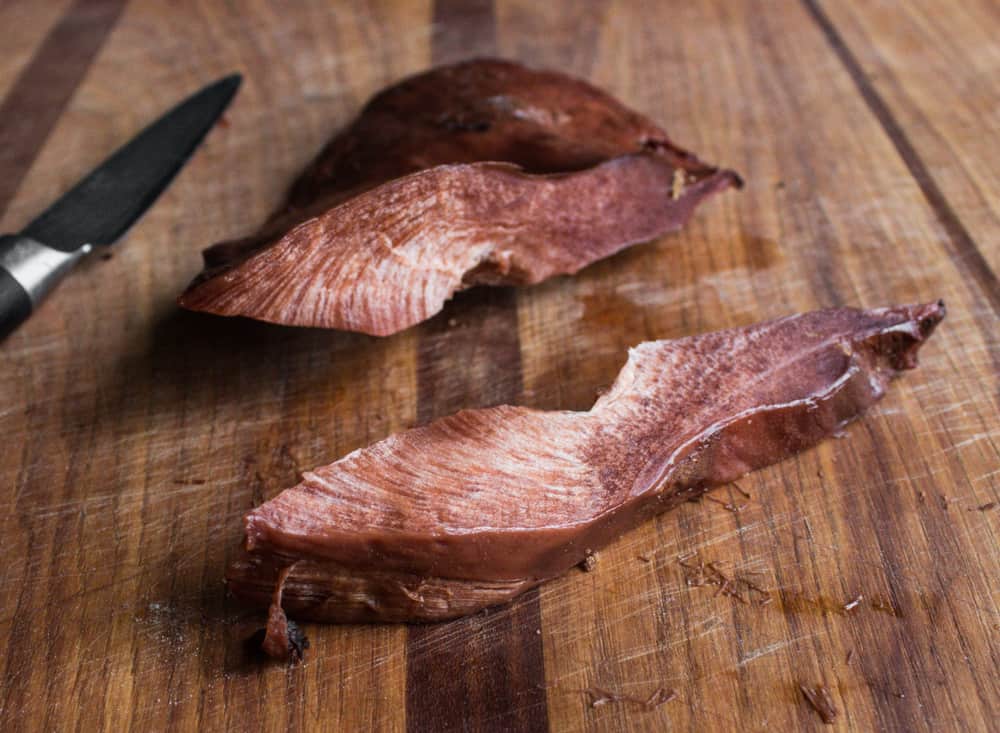
Cutting up my first beefsteak mushroom (Fistulina hepatica) was a mess. My cutting board looked like a murder scene, my hands were tacky and red, there was sticky trim scraped off of the knife in little piles around the board. In the end though, I did get a nice pile of dice from it to make the relish recipe I could see in my mind after I tasted it for the first time.
After I made a simple salad with them I enjoyed, I saw some other potential. The mushrooms were good raw, but less assertive than I thought they would be: they needed a little help, just a touch of acid.
The sour flavor is really novel with them, and absolutely worth experimenting with, as it's not often mushrooms in their natural state scream to become a condiment, or eaten raw.
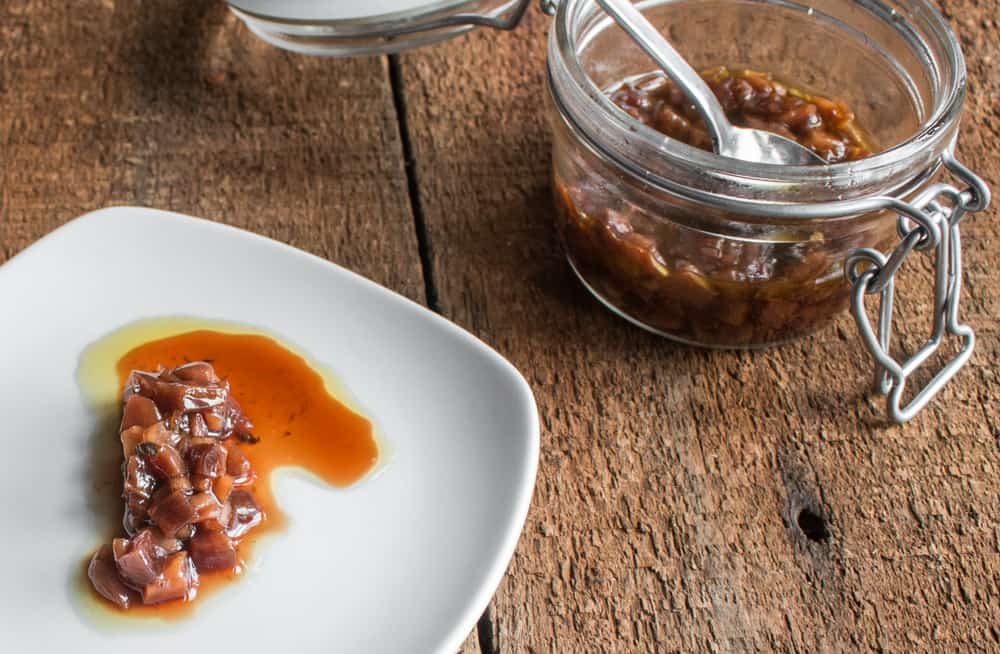
How it's made
Gently enhance the sour flavor of the mushrooms with a marinade that's low on the acid, let them sit for 24 hours, then put them on stuff. There was a bonus effect in that the juice of the beefsteaks is red.
I guessed that high heat and searing would change the composition of the juice to no longer be red, or just evaporate juice out of the mushroom to the point where it was juice-less. Keeping it raw though, could be a good experiment. Salt draws out water, and keeping the mushrooms in a wet atmosphere meant that the juice that flowed out of the mushrooms stayed red, blood red, and I was happy.
If you use other mushrooms besides beefsteaks, cook them first
Herbs to use
The relish recipe is delicate. You could add herbs to it, but I would keep them mild ones: parsley, chives, tarragon, chervil, would all be good. What I have for you here is a relish that tries to be pure and honor the beefsteak, it's nothing more than some lemon juice, a pinch of salt, some great olive oil, shallot, and mushrooms. Sometimes less is more, you know?
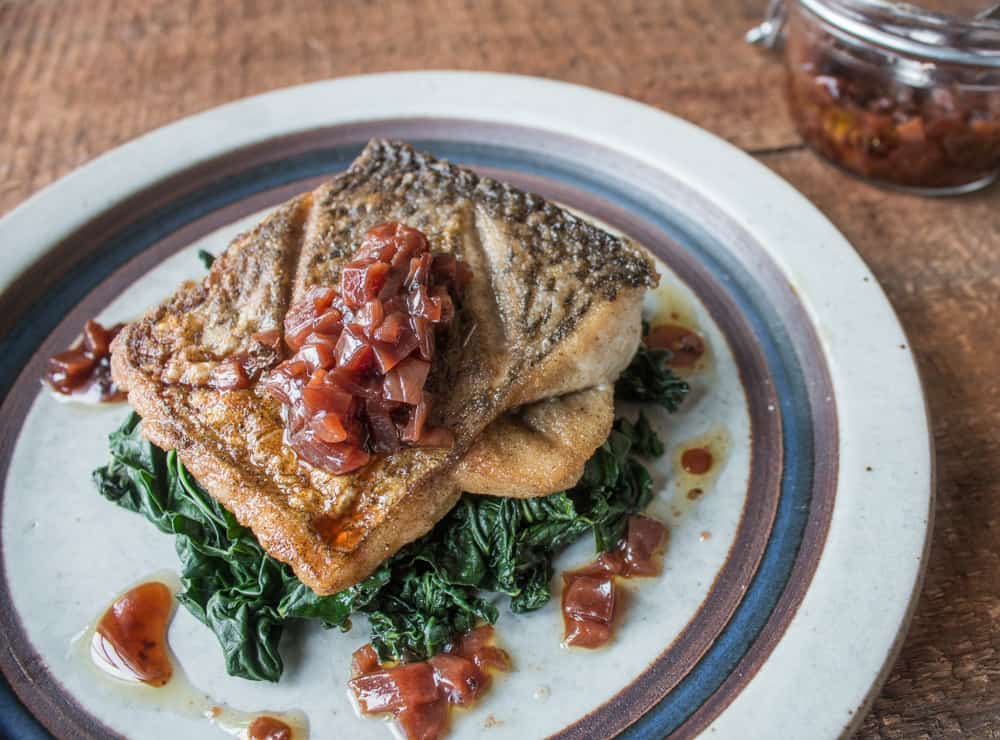
It goes without saying that it would be a shame not drizzle the blood-red juice over things that you use it on. Refer to the picture of cornmeal crusted whitefish with the relish I have pictured as an example.
Beefsteak Mushroom Relish
Equipment
- 1 small mixing bowl
- 1 pint jar for storing
Ingredients
- ½ cup beefsteak mushrooms diced ¼ inch
- 1 tablespoon shallot diced ¼ inch
- 1 tablespoon extra virgin olive oil
- 5 cracks of the pepper mill
- Squeeze of fresh lemon juice to taste
- ¼ teaspoon kosher salt
Instructions
- In a non-reactive bowl, like a stainless steel salad bowl, combine the salt and the shallot and let sit for 10 minutes. Add the mushrooms, oil, pepper and lemon juice and combine.
- Refrigerate until needed.
- The relish will keep under refrigeration for 5 days.

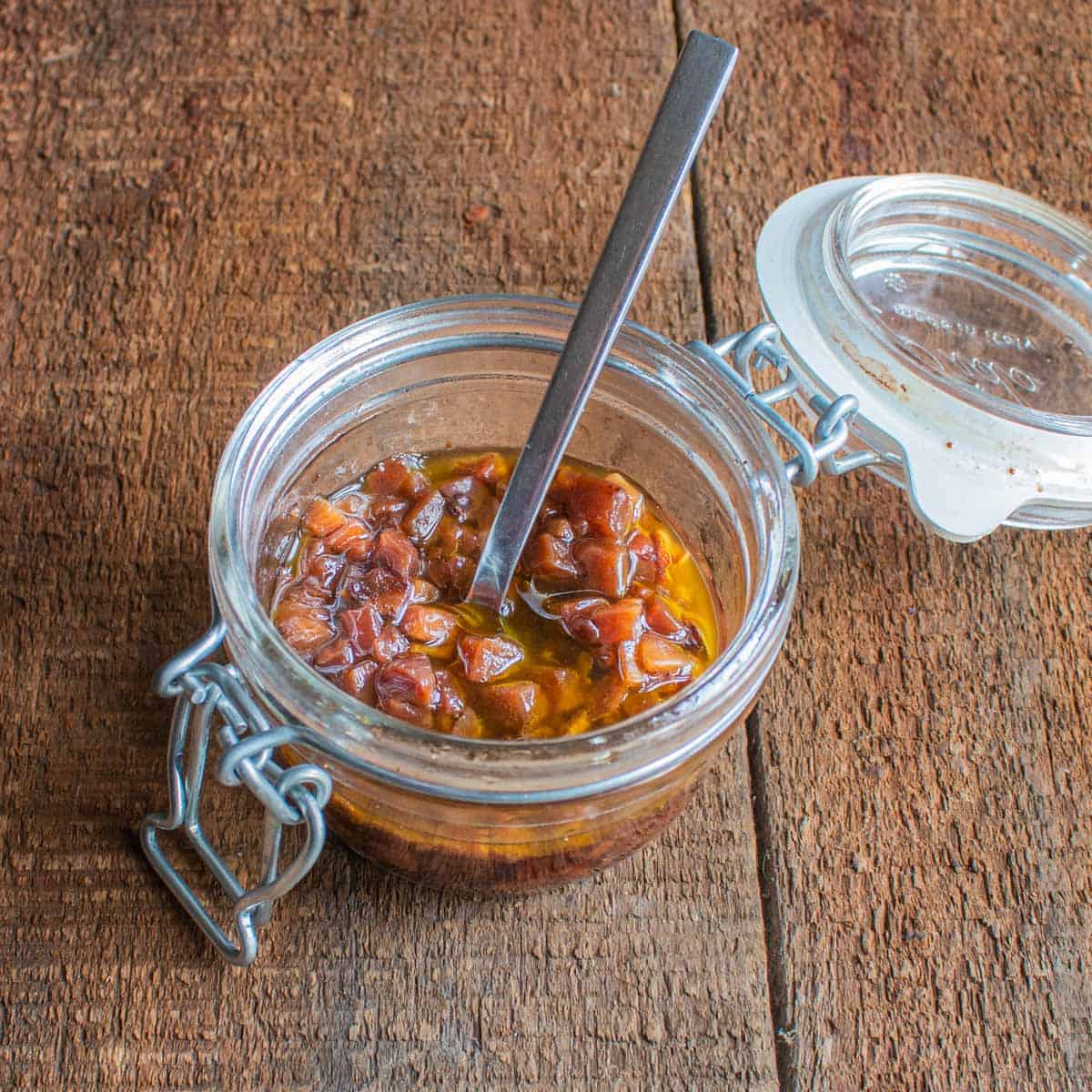
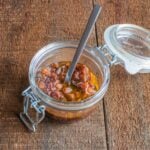
LH Shoemaker
Fabulous relish! Made it with fresh lemon juice and served it with lightly breaded, lightly fried fresh cod. Perfect! Enjoyed by even the mushroom skeptic in the family.
Alan Bergo
Excellent. Thanks for sharing.
Jana Harris
Thank you for your inspiration. I found my very 1st beefsteak this past Sunday and I had to try it. I made this relish and had it today on a sandwich with some ham. This is wonderful way to use unusual mushroom that tastes great raw. I did use rice vinegar to keep this longer in the fridge and also some more olive oil. It tastes refreshing and super tasty! thanks, for sharing these!
Alan Bergo
Glad it worked for you Jana.
Jacqui
Flooded with beefsteaks! Almost every tree in the mixed oak-chestnut woodlot on my university campus that I walk through every day on the way to work (am I lucky or am I lucky) seems to sport a beefsteak shroom this year. I continue to be disappointed in my search for maitake, to the extent that I wonder if there is some kind of antagonism, such that if the beefsteaks are in possession the maitake can't establish or won't show up... but I am happy enough with the beefsteaks. We have eaten a fair bit of beefsteak-mushroom carpaccio, just sliced raw with salt and mushroom- and garlic infused olive oil (reclaimed from the confit of black staining polypore), The beefsteak-mushroom stroganoff was very very good. In fact, it might have been the best. Tonight the vegan son will make beefsteak-mushroom fried rice and I will make this relish to top little sweet potato canapes with avocado. I think it will complement nicely.
Alan Bergo
Jacqui, I found one tiny one this year and I was ecstatic. It hasn't been a good year for maitake for me either, I found a few, but we didn't get the rain we needed, and my large trees gave only small mushrooms. Stroganoff sounds good.
Michael Norris
No wild mushrooms should be eaten raw.
Alan Bergo
Michael. Just like meat, most mushrooms, especially wild, should not be eaten raw. But, to say that no wild mushrooms should ever be eaten raw ignores thousands of years of ethnobotanical evidence of consumption across the globe, along with cultural traditions, like porcini salad in Italy, Amanita Caesarea in France, and Raw matsutake salad in Japan.
If you're referring to the argument against raw mushroom consumption because mushrooms contain chitin, that's not going to work either. It's possible for humans to eat things purely for pleasure, or for other reasons, and just because we can't digest all or part of something (there's probably nutrients we get from mushrooms besides indigestible fiber) doesn't mean that we should say it shouldn't be eaten. Take corn for example, we can't digest corn unless it's been nixtamalized, but that doesn't stop millions of people from eating it every summer.
Basically, most wild mushrooms should not be eaten raw, but some can be excellent prepared like that. At your house, do what you want, but here, science co-exists with human culinary history and tradition.